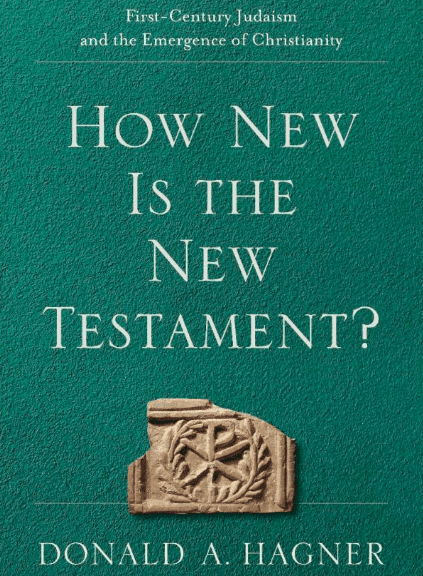 In his new book, How New is the New Testament?, Don Hagner examines the theme of “newness” in the New Testament.
In his new book, How New is the New Testament?, Don Hagner examines the theme of “newness” in the New Testament.
He concludes that there is both discontinuity and continuity. So far not controversial. The issue is of course “how” new is the New Testament?
Hagner states in conclusion what is new and what strikes the chord of discontinuity, and notice all the “new” things in the era of Jesus:
For our purposes, the significant occurrences of the word “new’ are the following: new creation, new covenant, new wine, new man, new (unleavened) lump, new commandment, new teaching, new name, new song, new Jerusalem, new heavens and new earth.
Beyond terms are concepts, ideas, and many of these are quite useful in scholarship today for creating a narrative that pulls it together:
Beyond the actual use of the word “new,” there are also instances of obvious conceptual reference to new realities: new exodus, new Moses, new Israel, new people, renewed nature, new temple, new law, new priesthood, new high priesthood, new sacrifice, new descendants of Abraham, second Adam, and the dawning kingdom of God itself.
This speaks to discontinuity:
In all these instances, the new implies a significant degree of discontinuity with the old. At the same time, however, because of the connection to the old, the discontinuities paradoxically substantiate the unity of the Bible.
But… with continuity, on the basis of continuity…
As we have frequently noted, the very idea of fulfillment, so important to the NT writers, is itself an expression of continuity. The discontinuity can only be appreciated by a knowledge of the underlying continuity. Newness can only be assessed when compared and contrasted with what preceded. That is why the OT is absolutely indispensable to the understanding of the NT.
What about the continuity?
Through and through the NT is Jewish. A huge amount of material is based directly upon, or simply assumes, continuity with the OT and Judaism. Much of the pervasive continuity is incidental or inconsequential. But much is of determinative and continuing significance for understanding the NT. Starting with creation, monotheism, and the view of God and moving to the covenants made by God with his chosen people, the morality of the law, the prophets, wisdom, the vision of future eschatology, and more, the NT draws heavily on Jewish tradition and the OT—the latter accepted as having divinely inspired authority, if indeed relativized to an extent by the new that has come. A constant indicator of this is the direct use of the Scriptures reflected in the myriad of OT quotations and allusions, but also concepts and Greek terminology via the mediation of the Septuagint and modes of argumentation following rabbinic practice. Even the hermeneutical methods employed by the NT writers in their interpretation of the OT are fundamentally Jewish. In particular, the NT writers often employ typological correspondence between OT events and NT parallels in their use of Scripture.















